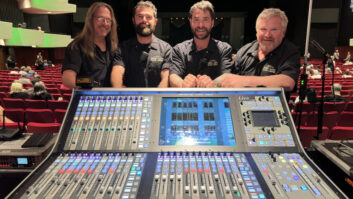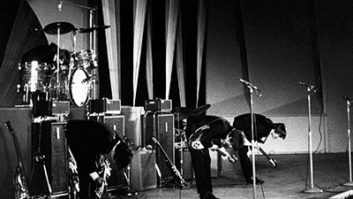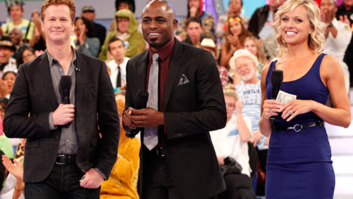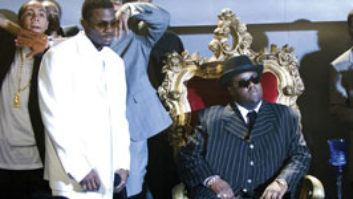Hello, broadcasters! I have, on occasion, been one of you. And while my current reality is quite different from my former freelance existence, I will never forget the camaraderie of being part of a team, and the responsibility and adrenaline rush that accompany a live broadcast. That experience even prepared me for life as a parent, but I’ll save that story for the post-credit wrap.
My focus is on the audio signal chain for television and radio broadcast. I can imagine what a nightmare it is having to work with so many different sound sources. As a listener, I hear the disparities and wish the solution were as easy as dropping by the station and brainstorming with fellow geeks, but I know it’s more complicated (and political) than that. Still, I have a few simple suggestions that perhaps can make someone’s life easier.
The editors would prefer that I give “Fletcher-Munson” a rest. This article really isn’t about that topic at all; it’s about tweaking ’round the proximity effect. Both are related, but I promise not to exceed the “three-strikes” rule.
DRIVER’S ED
I’m spending more time on the road these days in my Toyota Camry with a non-stock JVC radio/CD player. I’m constantly messing with the tone controls. My reference setting involves pressing the Loudness switch with the tone controls set flat for CDs, and it sounds pretty decent. I can hear bass, and the treble doesn’t hurt my ears.
The “L” button goes off for local public radio announcer/host/DJs, along with some bass roll-off. Everything goes back to “reference” when the music comes back on. I love Terry Gross and Fresh Air, but that show and other NPR programs also need a little treble boost. However, our local new-music station, The Current, is as sonically smashed as commercial radio. Such stations are EQ’d as if listeners had no tweeters. I roll off the treble (to an arbitrary -6) and sometimes bump up the bass (+1).
The figure details the frequency response of the broadcast-standard Electro-Voice RE20 vocal mic with a family of five curves, showing the effect of proximity from (top to bottom) 1/8, one, two, 12 and 24 inches from the mic. There’s a whopping 10 dB more 125Hz bass response when the lips are a mere 1/8-inch from the mic.
Our local jazz station, KBEM, sounds okay as compared to the rest of the mush on the dial. The treble is clean, not smeared, and the bass is well-defined until the announcer thunders in. Granted, jazz is not processed like pop music in whatever form — rock, R&B, hip hop, rap, etc. — so the DJs should fit in better than they currently do.
BOOM, BOOM, BOOM
Among all of radio’s disparate sound sources — network feeds, commercials and local programming — it’s the “microphone-eating” on-air talent who make it hard for me to think. Some listeners may dig booming voices, but it’s mud to me and doesn’t help intelligibility. Many of the brighter-sounding stations are also bass-deficient. And using global EQ/multiband processing at the transmitter to tame the proximity effect would shortchange the music.
Increasing distance between talent and the mic can help reduce proximity’s extra low end (see the figure), so the issue is simply a matter of enforcement. Establishing and maintaining the distance is no small task. And with small, poorly treated studios, distance has its downside: It allows more room tone, which can be a problem. Corner (mini) traps can be very effective at minimizing small-room resonance.
To reduce proximity boom, start by taking full advantage of whatever bass roll-off (highpass filter) a microphone has to offer. Most of the time, that will not be enough. (The Sennheiser MD 421 has a five-position bass filter combined with a broad upper-midrange presence.) If all that seems too thin for the talent, then try reversing the polarity at the mic preamp or adding some bottom to the headphone mix.
Note: Close your earflaps to hear how sound travels inside your head. To ensure the warmth that talent craves, make sure the incoming headphone signal is in-phase with the “bone conduction.” Reversing polarity will produce immediate results. What’s right will be obvious.
Music CDs and commercials are crafted for maximum loudness, so they really don’t need any additional dynamics processing, but the on-air talent mic requires the same type of “treatment” that went into the music (or commercial) production. Using the curves seen in the figure should help you approximate the subtractive EQ settings. Once the muck is removed, compression can be added to the talent mic (or perhaps some simple multiband processing). Now the mic should be competitive with the music and allow for more relaxed processing at the transmitter.
I know the goal is to preserve the traditional “FM DJ warmth” and intimacy, but keep in mind that most consumer systems have that Fletcher-Munson thing happening. No matter how “religious” you want to be about “listening flat,” consumers will always dial in that smiley-faced EQ.
BRIGHTNESS AND CONTRAST
Consumers generally complain about the excessive level of TV commercials, which have much in common with pop mixes. At the other extreme, network TV programs take advantage of using dynamics for impact; much like sound for film, the networks ensure that every word of dialog is heard, with no mud, providing maximum clarity without being excessively bright or strident.
Local TV affiliates face a particularly muddy, uphill battle considering the number of lapel mics that they use. Nearly all are cardioid for minimizing phase issues with other mics, as well as studio noise. With such proximity to the chest (rather than at the mouth), not only is there ample bottom, but a pronounced lack of top.
The solution involves the mic (assuming it comes with a filter), plus additional EQ and processing as a permanently patched part of the signal chain. I am assuming from the sound that I hear that most board operators don’t touch the EQ. Using a mechanical VU meter pre- and post-processor is the best way to judge loudness as perceived by the ear.
Optimizing each sound source would reduce the necessity of heavy-handed multiband processing and ultimately make any station more listenable. Isn’t that the goal? FM currently sounds worse than a bad MP3, and taking into account how much work goes into a mix, it’s no wonder listeners are programming their own music.
LIFE LESSONS LEARNED
About five years ago, my wife called me upstairs for an emergency. My son, who was a year old at the time, was choking on something. In the blink of an eye, I had his belly on my arm with his head down and patted him on the back until the offending item popped out. My relieved spouse looked at me and said, “You were so calm,” to which I replied, “I’ve done live television!”
Eddie’s most recent foray into “television” was repairing an SSL video display. For more fun, visit
www.tangible-technology.com.







